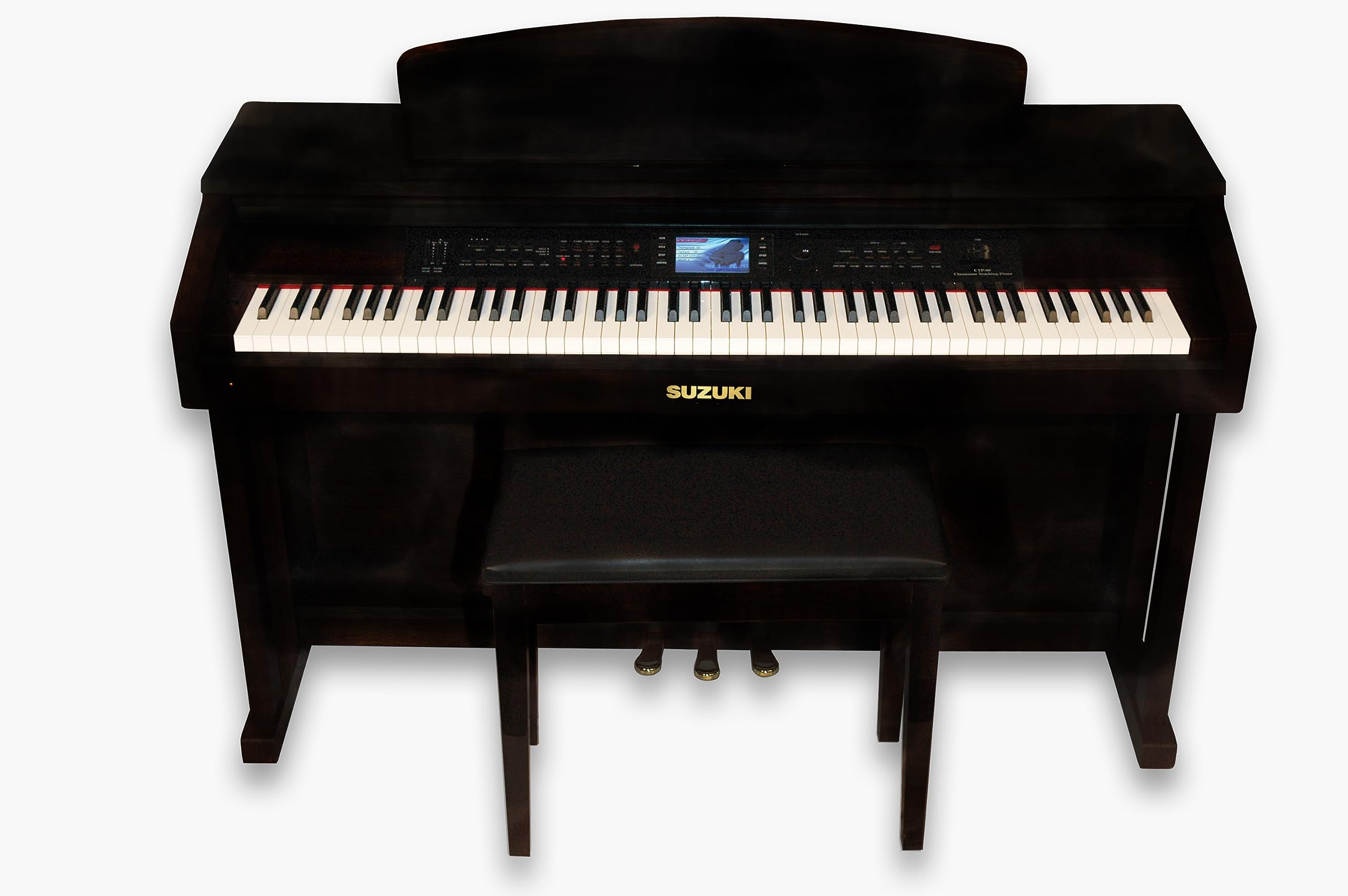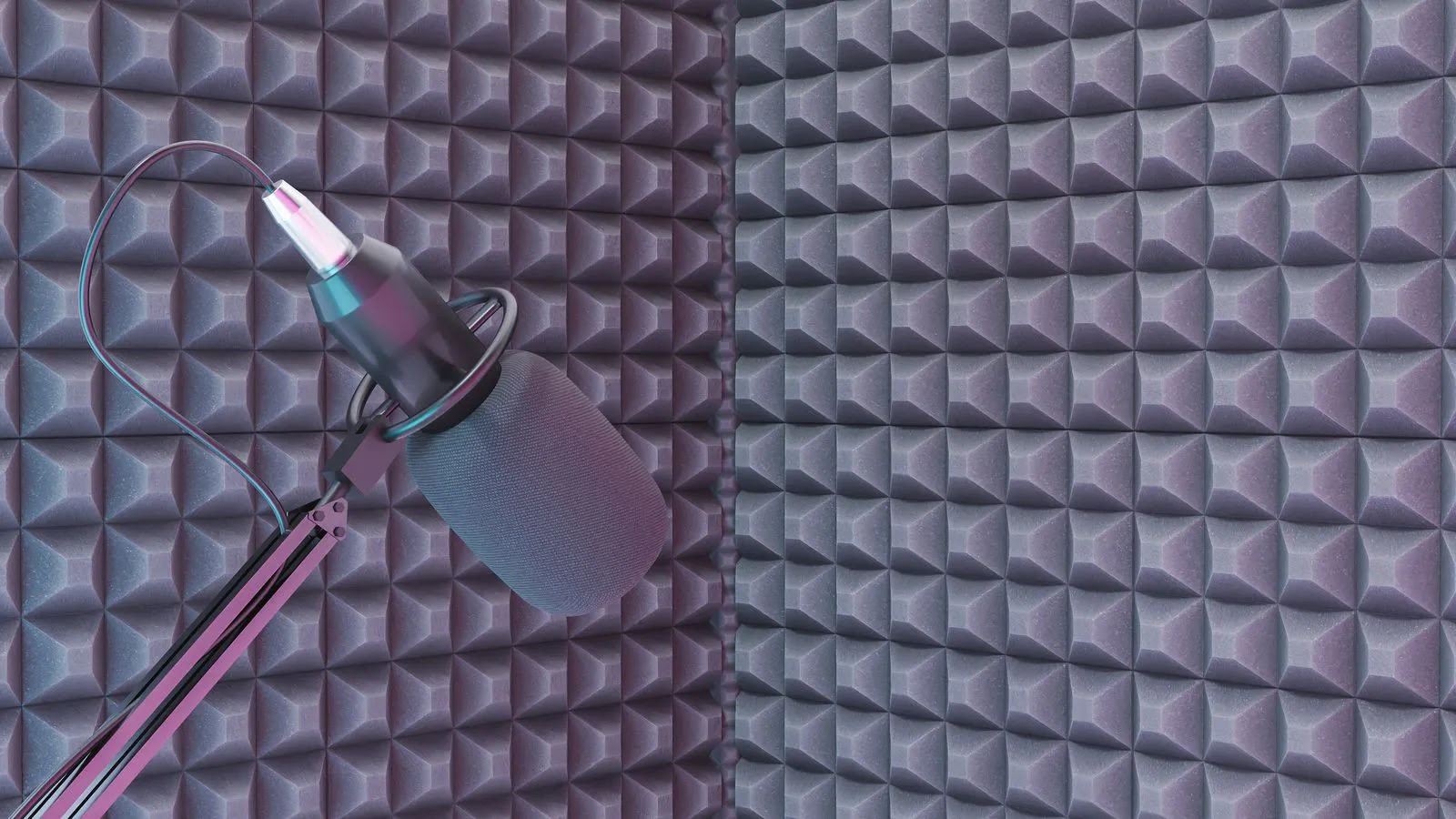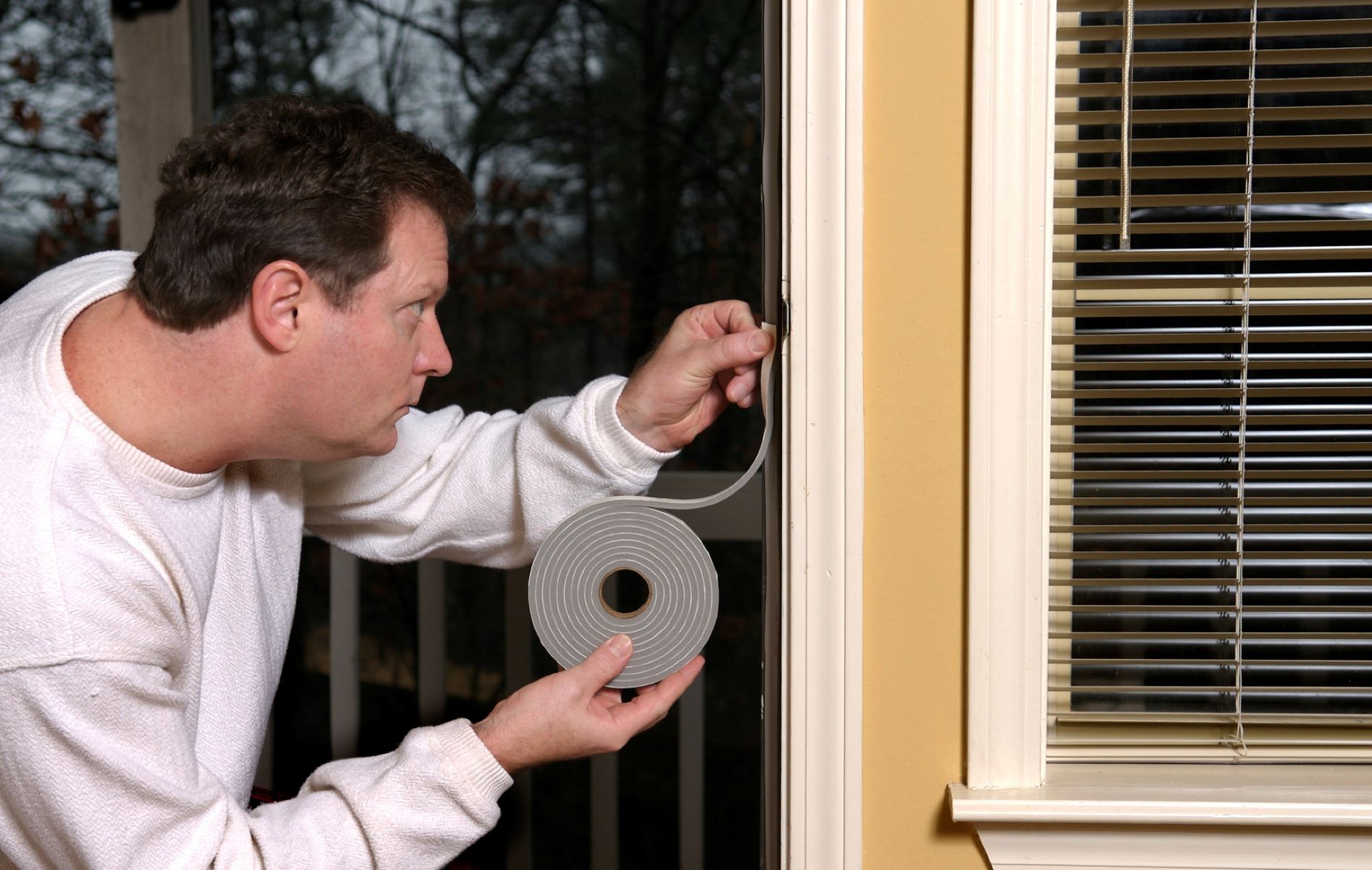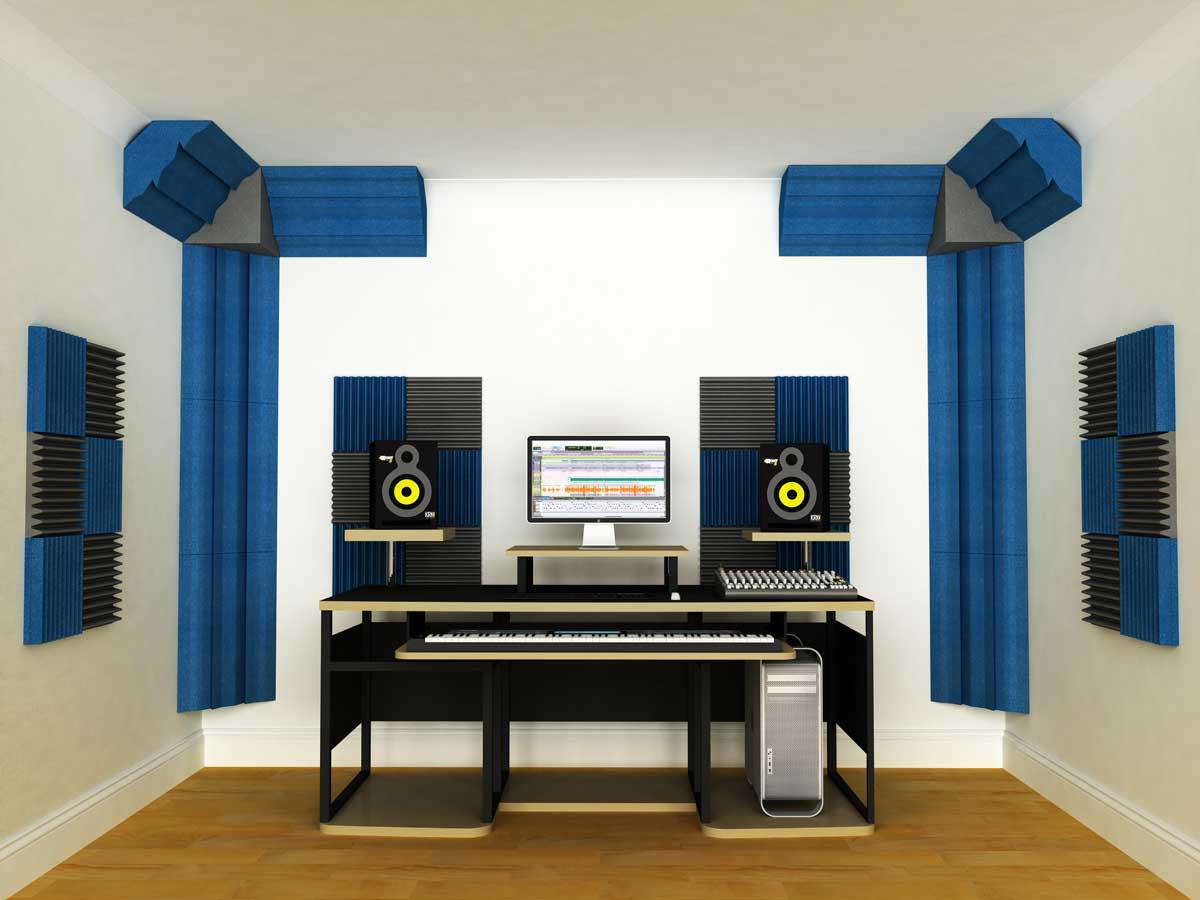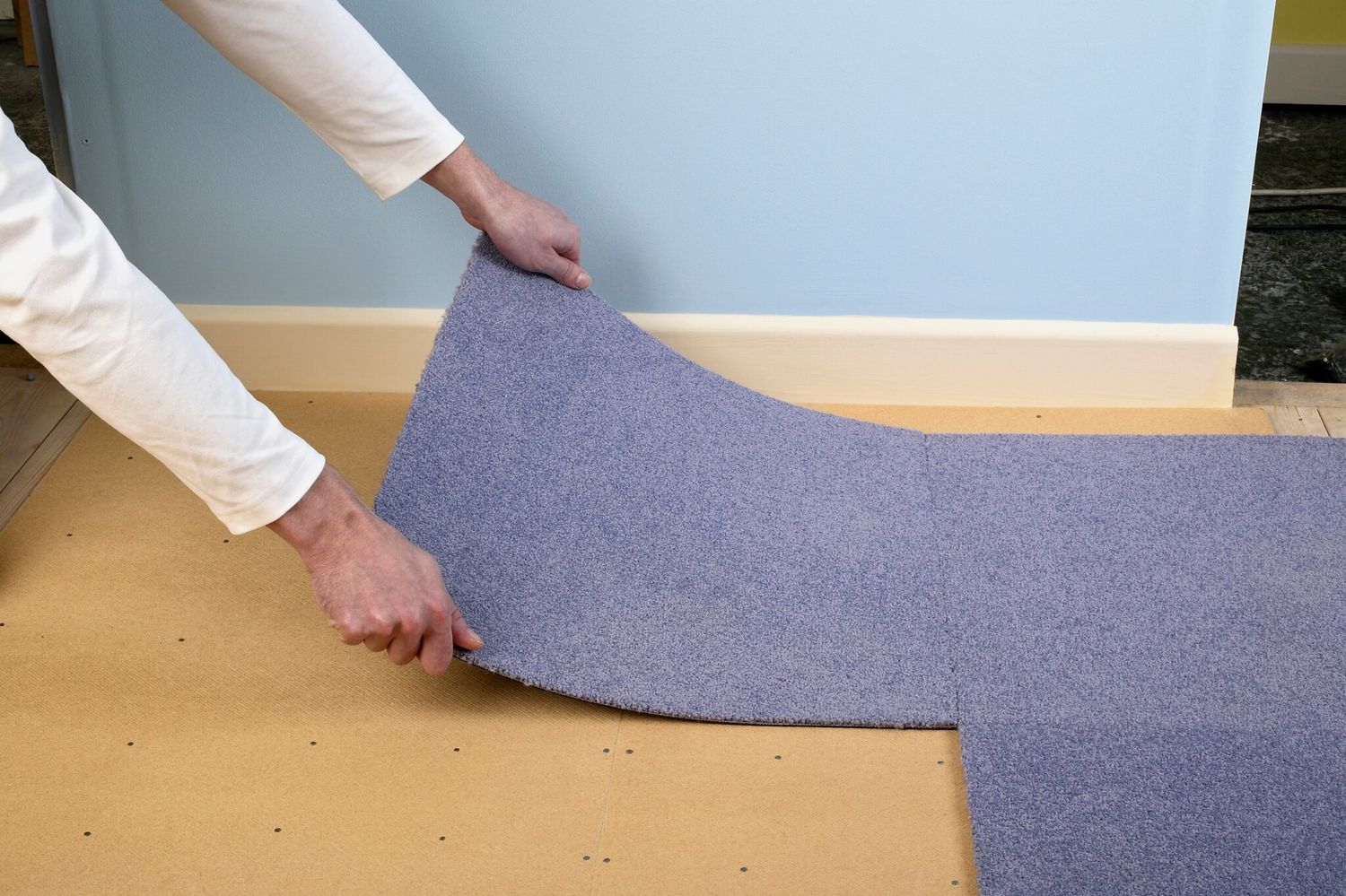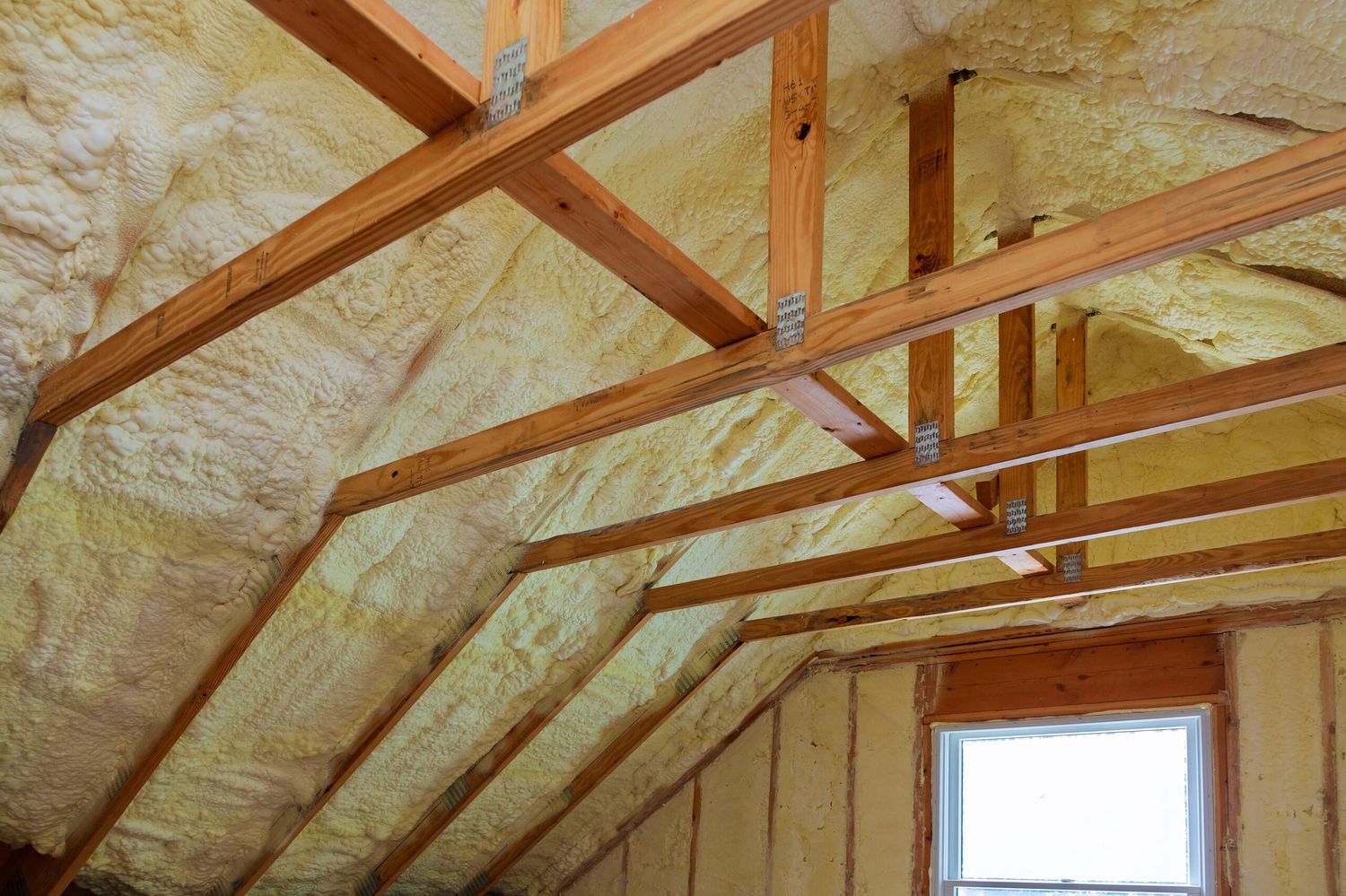Home>Production & Technology>Soundproofing>What Is Best Soundproofing Method For Ceiling
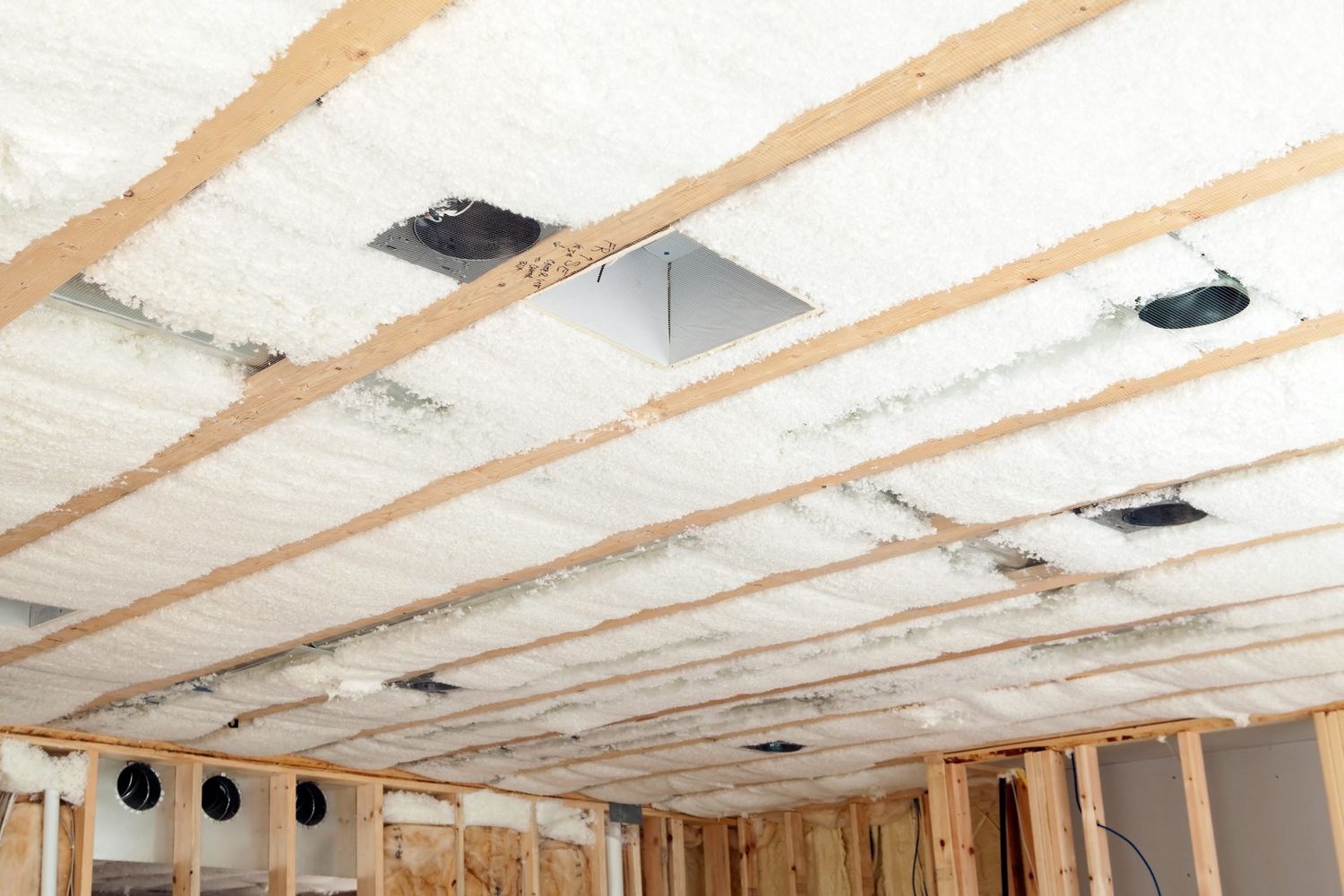

Soundproofing
What Is Best Soundproofing Method For Ceiling
Published: January 26, 2024
Learn the most effective soundproofing method for your ceiling to create a peaceful and quiet space with our expert guide. Discover the benefits of soundproofing and improve your living environment today!
(Many of the links in this article redirect to a specific reviewed product. Your purchase of these products through affiliate links helps to generate commission for AudioLover.com, at no extra cost. Learn more)
Table of Contents
Introduction
When it comes to creating a peaceful and quiet environment, soundproofing is essential. Whether you live in a noisy urban area or want to create a tranquil space within your home, soundproofing can help to minimize unwelcome noise and provide a more comfortable living or working space.
One area that often requires special attention when it comes to soundproofing is the ceiling. Sound can easily transfer through ceilings, especially in multi-story buildings or spaces where there are shared walls. The constant noise from footfalls, appliances, or even the sound of conversations can be a significant source of disturbance. Therefore, it is vital to find the best soundproofing method for your ceilings.
By soundproofing your ceiling, you can improve sleep quality, increase productivity, reduce stress levels, and enjoy a more peaceful and sound-free environment. In this article, we will explore various soundproofing methods for ceilings and discuss the factors to consider before choosing the best option for your needs.
Importance of Soundproofing Ceilings
Soundproofing ceilings is crucial for several reasons. Firstly, a well-insulated ceiling prevents sound from traveling between floors in multi-story buildings. This is especially important in apartments, office buildings, or condominiums where noise can easily disturb neighboring spaces.
Secondly, soundproofing ceilings can create a more peaceful and enjoyable living or working environment. It helps to reduce outside noise pollution such as traffic, construction, or loud neighbors, allowing you to focus on your tasks or relax without unwanted disturbances.
Additionally, soundproofing ceilings can improve acoustic performance within a room. If you enjoy playing musical instruments, watching movies with surround sound, or hosting gatherings where music is played, soundproofing can prevent sound from escaping the room and causing disruptions to others in the building.
Moreover, soundproofing ceilings can have significant benefits for health and wellbeing. Excessive noise has been linked to stress, sleep disturbances, and decreased concentration levels. By soundproofing your ceiling, you can create a quieter space that promotes better sleep, reduces stress levels, and increases productivity.
Lastly, soundproofing ceilings can also increase the resale value of your property. Potential buyers or tenants are often attracted to properties that offer a peaceful and quiet living environment, making soundproofed ceilings a desirable feature.
In summary, soundproofing ceilings is important for minimizing noise transmission between floors, creating a peaceful environment, improving acoustic performance, promoting better health and wellbeing, and increasing the value of your property.
Factors to Consider Before Choosing a Soundproofing Method
Before deciding on a specific soundproofing method for your ceiling, there are several factors you should consider:
- Noise Source: Identify the main sources of noise that you want to block out. Is it airborne noise, such as voices or music, or impact noise, like footsteps or moving furniture?
- Budget: Determine how much you are willing to invest in soundproofing. Different methods have varying costs, so it’s important to set a budget beforehand.
- Space Constraints: Assess the available space in your ceiling. Some soundproofing methods may require more space than others.
- Installation Difficulty: Consider your level of DIY skills and whether you are comfortable with the installation process. Some methods may be more straightforward than others.
- Effectiveness: Research and compare the effectiveness of different soundproofing methods. Look for customer reviews, performance ratings, and professional advice to determine which method suits your needs the best.
- Aesthetics: Consider the overall look and design of your space. Soundproofing materials come in various styles and finishes, so choose one that complements your interior.
- Fire Safety: Ensure that the soundproofing method you choose complies with fire safety codes, especially if you are soundproofing a commercial or public space.
- Longevity: Evaluate the durability and lifespan of the soundproofing materials. You want a method that will remain effective and last for a long time.
By considering these factors, you can make an informed decision when selecting a soundproofing method for your ceiling. Each factor will help narrow down your options and ensure that you choose the most suitable solution for your specific needs and requirements.
Acoustic Insulation
Acoustic insulation is one of the most common and effective methods for soundproofing ceilings. It involves adding a layer of insulation material within the ceiling cavity to absorb and dampen sound waves.
The insulation material is typically made of mineral wool, fiberglass, or cellulose fibers. These materials work by reducing the transmission of sound vibrations through the ceiling structure.
When installing acoustic insulation, it is essential to choose the right thickness and density to achieve optimal soundproofing results. Thicker and denser insulation provides better sound absorption. Additionally, ensure proper insulation coverage in all areas of the ceiling to prevent any sound leakage.
Acoustic insulation offers several benefits. It not only helps to block out external noise sources, such as traffic or neighbors, but also reduces the echo and reverberation within a room. This is particularly useful in spaces with high ceilings, like conference rooms or recording studios, where sound reflections can be disruptive.
One advantage of using acoustic insulation is that it is relatively easy to install, especially in open ceilings or during new construction or renovations. However, in existing ceilings, installation may require removing portions of the ceiling to access the cavity for insulation placement. It is recommended to consult with a professional or contractor for installation guidance.
Additionally, acoustic insulation has thermal insulation properties, meaning it can help regulate the temperature within a space and improve energy efficiency.
Overall, acoustic insulation is a versatile and effective method for soundproofing ceilings. It provides excellent noise reduction, controls reverberation, and offers thermal insulation benefits. However, it’s important to consider the space constraints and installation requirements before choosing this method.
Mass Loaded Vinyl (MLV)
Mass Loaded Vinyl (MLV) is a popular soundproofing material used for ceilings, walls, and floors. It consists of a dense and flexible vinyl sheet that is infused with materials such as barium sulfate or calcium silicate to add weight and increase its soundproofing capabilities.
MLV is effective in blocking airborne sound transmission and reducing the impact of noise. It works by adding mass to the ceiling structure, which helps to absorb and reflect sound waves, preventing them from passing through and entering the room.
One of the advantages of MLV is its versatility. It can be easily cut and fitted to the dimensions of your ceiling, making it suitable for both new construction and retrofitting. It can be installed by applying adhesive directly to the ceiling or by sandwiching it between layers of drywall or other ceiling materials.
MLV is particularly effective in blocking low-frequency noises, such as footsteps, machinery vibrations, or heavy appliance sounds. It is also resistant to moisture, making it suitable for use in areas like bathrooms or kitchens.
When using MLV, it’s important to ensure proper installation and overlap of the sheets to eliminate any gaps that could allow sound to leak through. Additionally, be mindful that MLV adds weight to the ceiling, so it’s essential to ensure that the ceiling structure can support the additional load.
MLV is a durable and long-lasting soundproofing solution that can significantly reduce noise transmission through ceilings. However, it is worth noting that MLV alone may not provide complete soundproofing. For optimal results, it is often recommended to combine MLV with other soundproofing methods, such as acoustic insulation or resilient channels, to achieve better overall sound reduction.
In summary, Mass Loaded Vinyl (MLV) is a flexible and versatile soundproofing material suitable for ceilings. It adds mass to the structure, effectively blocking airborne and impact noise. However, proper installation and combination with other soundproofing methods may be necessary for optimal results.
Soundproof Drywall
Soundproof drywall, also known as soundproof gypsum board or acoustic gypsum board, is specifically designed to reduce noise transmission through walls and ceilings. It is made by sandwiching a layer of viscoelastic material, such as vinyl or rubber, between two layers of gypsum board.
This special construction of soundproof drywall helps to dampen sound vibrations and prevent them from passing through the ceiling structure. It provides better sound insulation compared to conventional drywall, making it an effective solution for soundproofing ceilings.
Soundproof drywall is available in different thicknesses, with thicker boards providing higher sound transmission class (STC) ratings. The STC rating measures the material’s ability to block sound, with higher ratings indicating better soundproofing performance.
Installation of soundproof drywall is similar to that of regular drywall. The boards can be cut and screwed into place, just like standard drywall panels. However, due to its increased weight compared to regular drywall, it is important to ensure that the ceiling structure can adequately support the additional load.
One advantage of soundproof drywall is that it can be easily painted or textured to match the existing ceiling decor, allowing for a seamless integration. Additionally, it offers fire-resistance properties, which is an important consideration for building safety codes.
While soundproof drywall is an effective option for soundproofing ceilings, it may not provide as much sound reduction as other methods like mass loaded vinyl or acoustic insulation. Therefore, it is often recommended to combine soundproof drywall with other soundproofing techniques for optimal results.
Soundproof drywall is an excellent choice for soundproofing ceilings in both residential and commercial settings. It offers improved sound insulation and can blend seamlessly into the existing ceiling design. Nevertheless, it is important to consider the specific soundproofing requirements of your space and consult with experts to determine the most suitable combination of soundproofing methods.
Green Glue
Green Glue is a popular soundproofing compound that is used to dampen noise transfer through walls and ceilings. It is a viscoelastic material that is applied as a layer in between two surfaces, such as drywall or plywood, to effectively reduce the transmission of sound vibrations.
The key ingredient in Green Glue is a unique damping material that converts sound energy into heat, thereby dissipating sound waves and reducing their ability to pass through the surface. This significantly minimizes the transfer of airborne and impact noise.
One of the advantages of Green Glue is its ease of application. It comes in tubes or pails and can be easily applied using a standard caulk gun or trowel. Simply apply a layer of Green Glue between two layers of drywall or other ceiling materials during installation.
Green Glue has excellent adhesion properties, allowing it to create a tight seal when applied correctly. This seal helps to isolate and absorb sound vibrations, resulting in a quieter and more acoustically sound environment.
Another benefit of Green Glue is its versatility. It can be used in various applications, including in new constructions or renovations. It is effective in reducing both airborne noise, such as voices or music, and impact noise, like footsteps or moving furniture.
It is worth noting that Green Glue is not meant to be used as a standalone solution for soundproofing ceilings. It is best used in conjunction with other soundproofing methods, such as acoustic insulation or soundproof drywall, to achieve optimal sound reduction.
Furthermore, Green Glue is environmentally friendly and low in VOC (Volatile Organic Compounds), making it a safe and sustainable option for soundproofing.
In summary, Green Glue is a versatile and effective soundproofing compound that helps to reduce noise transfer through ceilings. It is easy to apply, provides excellent adhesion, and is environmentally friendly. However, it is most effective when used in combination with other soundproofing methods.
Resilient Channels
Resilient channels, also known as soundproofing channels or isolation clips, are metal strips or channels that are installed between the ceiling joists and the drywall. They help to decouple the drywall from the structure of the ceiling, reducing the transfer of sound vibrations.
The design of resilient channels allows the drywall to vibrate independently of the ceiling structure. This breaks the path of sound transmission, preventing it from traveling through the ceiling and into the room below or adjacent spaces. It helps to minimize both airborne and impact noise.
Resilient channels are typically made of steel or aluminum and have a corrugated or hat-shaped profile. The channels are attached horizontally to the ceiling joists, and the drywall is then installed onto the channels, effectively isolating it from the structure.
One advantage of resilient channels is their effectiveness in reducing noise transmission. They provide a significant improvement in soundproofing performance by decoupling the ceiling from the structure, especially for low-frequency sounds like footsteps or bass vibrations.
Installation of resilient channels requires proper spacing and securing to the ceiling joists. It is crucial to follow the manufacturer’s guidelines and recommendations for the specific channel type being used. Additionally, attention should be given to proper installation around electrical outlets, light fixtures, and other ceiling fixtures to maintain the integrity of the soundproofing barrier.
It is important to note that resilient channels alone may not provide complete soundproofing. It is often recommended to combine them with other soundproofing methods, such as acoustic insulation or soundproof drywall, for more effective noise reduction.
Resilient channels are a cost-effective and efficient solution for soundproofing ceilings. They offer significant improvement in noise reduction, particularly for low-frequency sounds. However, proper installation is crucial to achieve optimal results.
In summary, resilient channels provide an effective way to minimize noise transfer through ceilings. They decouple the drywall from the ceiling structure, reducing sound vibrations and improving soundproofing performance. Combined with other soundproofing methods, resilient channels can help create a quieter and more comfortable living or working space.
Soundproofing Paint
Soundproofing paint, also known as acoustic paint or noise-reducing paint, is a specialized type of paint that is designed to help reduce noise transmission through walls and ceilings. It contains sound-absorbing additives that help dampen sound vibrations and absorb sound waves.
Soundproofing paint works by adding a layer of thickness to the surface, which helps to minimize the reflection and transmission of sound. It can be applied to various ceiling materials, including drywall, plaster, wood, or concrete.
While soundproofing paint is not as effective as other soundproofing methods like insulation or drywall, it can provide a noticeable reduction in airborne noise such as echoes or reverberation within a room.
When using soundproofing paint, multiple coats are typically applied to ensure the desired effect. It is important to follow the manufacturer’s instructions for the application process, including proper priming and drying times, to achieve the best results.
One advantage of soundproofing paint is its ease of application. It can be applied using a paintbrush or roller, just like regular paint. It is also available in a variety of colors, allowing you to maintain the desired aesthetic of your space.
It is important to note that soundproofing paint alone may not provide complete soundproofing and should be used as a complement to other soundproofing methods. Consider combining it with insulation or other soundproofing materials for optimal results.
Furthermore, it is essential to manage expectations with soundproofing paint. While it can help improve the acoustics of a room and reduce noise reflections, it may not eliminate noise entirely, especially for lower-frequency sounds.
Overall, soundproofing paint can be a useful addition to your soundproofing efforts, particularly in reducing reverberation and echoes within a space. It is easy to apply and offers a cost-effective way to enhance the acoustic properties of a room. However, it is important to note its limitations and consider other soundproofing methods for more comprehensive noise reduction.
Ceiling Clouds
Ceiling clouds, also known as acoustic clouds or hanging baffles, are sound-absorbing panels that are suspended from the ceiling to improve sound control and reduce noise reverberation in a room. They are often used in spaces with high ceilings, such as auditoriums, gyms, restaurants, or open-plan offices.
Ceiling clouds are typically made of sound-absorbing materials like fiberglass or foam, encapsulated in fabric or other decorative coverings. They come in various shapes and sizes, including rectangular, square, or curved options. The panels are hung from the ceiling using cables or other suspension systems.
The purpose of ceiling clouds is to capture and absorb sound waves that would otherwise bounce off the ceiling, walls, and other hard surfaces. By reducing sound reflections and echoes, ceiling clouds help to improve speech intelligibility, create a more balanced acoustic environment, and reduce noise distractions.
When strategically placed, ceiling clouds can effectively absorb high-frequency sounds, resulting in better clarity and reduced overall noise levels. They also help to control the reverberation time in a room, making it more comfortable for conversations, music performances, or presentations.
One advantage of ceiling clouds is their versatility and aesthetic appeal. They can be customized to fit the design and style of the space, with options for different colors, shapes, and coverings. This allows you to incorporate them seamlessly into your ceiling design without sacrificing visual appeal.
Installation of ceiling clouds is typically straightforward. The panels are suspended at appropriate heights and positions to achieve optimal sound absorption. However, it is recommended to consult with a professional to ensure proper installation and achieve the best acoustic performance.
Ceiling clouds are an effective solution for improving sound control and reducing reverberation in spaces with high ceilings. They provide both functional and aesthetic benefits, enhancing the overall acoustic experience in the room. However, it’s important to note that ceiling clouds primarily address high-frequency sounds and may not provide complete soundproofing for low-frequency sounds.
In summary, ceiling clouds offer a visually appealing and effective way to control sound reflections and improve acoustics in rooms with high ceilings. They are customizable, easy to install, and can significantly enhance the comfort and quality of sound within a space.
Soundproofing Foam Panels
Soundproofing foam panels, also known as acoustic foam or sound-absorbing panels, are popular solutions for reducing echo and reverberation in rooms. They are made from open-cell foam materials, designed with a unique shape and structure to trap and absorb sound waves effectively.
These foam panels are commonly used in recording studios, home theaters, offices, and other spaces where sound quality and noise control are essential. They are available in various thicknesses, densities, and shapes, allowing for customization based on specific soundproofing needs.
The primary role of soundproofing foam panels is to absorb sound energy by converting it into heat. The open-cell foam construction helps to reduce sound reflections, echoes, and resonances that often occur in spaces with hard surfaces.
When sound waves come into contact with the foam panels, they penetrate the cells of the foam, causing multiple interactions and friction that dissipate the energy of the sound. As a result, the sound is effectively absorbed and the overall acoustic quality of the space is improved.
Soundproofing foam panels can be easily installed on the ceiling using adhesive backing, allowing for seamless integration into the existing decor. They can also be arranged in various patterns or configurations to achieve the desired acoustic effect.
While soundproofing foam panels are highly effective in reducing echo and reverberation, it is important to note that they primarily address mid to high-frequency sounds. They may not provide sufficient sound insulation for low-frequency noises or block sound transmission.
It is worth mentioning that soundproofing foam panels are not just practical, but they can also enhance the aesthetic appeal of a space. They are available in a wide range of colors and styles, allowing for customization and integration with the overall interior design.
However, it is important to consider the fire safety requirements when using soundproofing foam panels, especially in commercial or public spaces. Ensure that the foam panels meet the necessary fire rating standards and local building codes.
Overall, soundproofing foam panels are an effective solution for reducing echo and improving the acoustics of a room. They are easy to install, customizable, and offer both functional and aesthetic benefits. It is important to understand their limitations and consider additional soundproofing methods for complete noise reduction, particularly for low-frequency sounds.
Double Pane Windows
Double pane windows, also known as insulated or dual-pane windows, are a popular solution for soundproofing in spaces where outside noise is a concern. Unlike single pane windows, double pane windows consist of two glass panes separated by a layer of air or gas, typically argon or krypton.
The design of double pane windows creates a buffer zone that helps to reduce the transmission of sound waves from the outside environment into the room. The air or gas layer acts as an insulation barrier, preventing sound vibrations from easily passing through the windows.
The use of double pane windows for soundproofing offers several advantages. Firstly, they effectively reduce noise pollution from traffic, construction, or other external sources, creating a quieter and more peaceful indoor environment.
Secondly, double pane windows also provide thermal insulation benefits. The air or gas layer between the glass panes acts as a form of insulation, reducing heat transfer and improving energy efficiency. This can help to maintain a comfortable indoor temperature and reduce heating or cooling costs.
When considering double pane windows for soundproofing, it is important to select windows that have a sufficient air or gas gap between the panes. The wider the gap, the better the sound insulation properties. Additionally, the overall thickness and quality of the glass used can also impact sound reduction capabilities.
It is worth noting that while double pane windows offer effective sound reduction, they may not completely eliminate all noise. Factors such as the frequency and intensity of the sound, as well as any gaps or weaknesses in the window assembly, can affect the overall soundproofing performance.
Furthermore, installation of double pane windows may require professional assistance, especially when retrofitting existing windows. Proper sealing and alignment of the windows are crucial to ensure optimal soundproofing results.
In summary, double pane windows are an effective solution for reducing outside noise and improving insulation in a space. They offer benefits in terms of sound reduction and energy efficiency. However, it’s important to consider the specific soundproofing requirements and consult with experts to choose the most suitable window option for your needs.
Carpet or Rugs
Carpet or rugs can play a significant role in soundproofing a room, particularly in areas with hard flooring surfaces like hardwood, tile, or laminate. They act as a natural sound absorber, helping to reduce noise reflections and dampen sound vibrations.
When sound waves encounter a hard surface, such as a bare floor, they tend to bounce and cause echoes and reverberations in the room. By introducing carpet or rugs, the materials absorb and scatter the sound waves, preventing excessive reflections and reducing noise levels.
The thickness and density of the carpet or rugs play a crucial role in their soundproofing capabilities. Thicker and denser materials provide better sound absorption. Additionally, choose carpet or rugs with higher pile heights as they can help to trap and absorb more sound energy.
Carpet or rugs are particularly effective in reducing impact noise, such as footfalls or furniture movement. The soft and cushioned surface helps to absorb the impact, preventing it from transmitting through the floor and causing disturbances in the room below.
It is important to note that while carpet or rugs can help in reducing noise reflections and impact sounds, they may not completely block airborne noise from entering or leaving a room. For more comprehensive soundproofing, it may be necessary to combine carpet or rugs with other methods, such as acoustic insulation or double-pane windows.
Another advantage of carpet or rugs is their ability to create a more comfortable and cozy atmosphere. Besides the soundproofing benefits, they provide insulation properties that help to maintain a warmer and quieter environment.
When selecting carpet or rugs for soundproofing purposes, consider the overall thickness, density, and material composition. Wool or synthetic fibers are often preferred choices due to their sound-absorbing qualities. Additionally, choose carpets or rugs with high-quality underlays for further soundproofing benefits.
It is worth mentioning that regular maintenance and cleaning of carpet or rugs are essential to uphold their soundproofing performance. Dirt or debris accumulation can impact their ability to absorb sound effectively.
In summary, carpet or rugs are effective soundproofing solutions, especially in rooms with hard flooring surfaces. They help to reduce noise reflections and impact sounds, creating a quieter and more comfortable indoor environment. However, for complete soundproofing, it may be necessary to combine them with other soundproofing methods.
Conclusion
Soundproofing ceilings is an essential aspect of creating a peaceful and quiet living or working environment. With the right soundproofing methods, you can minimize noise transmission, reduce distractions, and enjoy a more comfortable space.
In this article, we explored various soundproofing methods for ceilings, including acoustic insulation, mass-loaded vinyl (MLV), soundproof drywall, Green Glue, resilient channels, soundproofing paint, ceiling clouds, soundproofing foam panels, double pane windows, and carpet or rugs.
Each of these methods offers its own benefits and considerations. Acoustic insulation and MLV provide excellent sound absorption and are relatively easy to install. Soundproof drywall and Green Glue add mass and dampen sound vibrations. Resilient channels decouple the ceiling from the structure, while soundproofing paint helps reduce echo and reverberation. Ceiling clouds and foam panels are effective at absorbing sound waves, while double pane windows offer insulation benefits. Lastly, carpet or rugs provide natural sound absorption and create a cozy environment.
It’s important to consider various factors before choosing a soundproofing method, such as noise sources, budget, space constraints, installation difficulty, effectiveness, aesthetics, fire safety, and longevity. By carefully evaluating these factors, you can determine the most suitable soundproofing solution for your specific needs.
Remember, achieving complete soundproofing may require the use of multiple methods in combination. No single method can eliminate all noise, but by employing a comprehensive approach, you can significantly reduce noise transmission and create a more tranquil and enjoyable space.
Ultimately, soundproofing your ceiling not only enhances your quality of life but also adds value to your property. Whether you’re seeking a peaceful home environment or a professional workspace free from disturbances, soundproofing methods provide practical and effective solutions.
So, take the necessary steps to soundproof your ceiling and enjoy the benefits of a quieter and more peaceful space!


